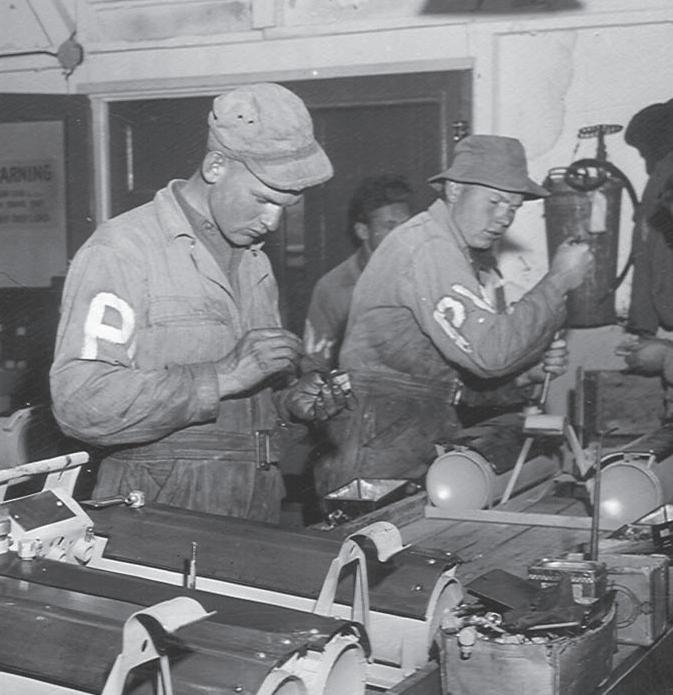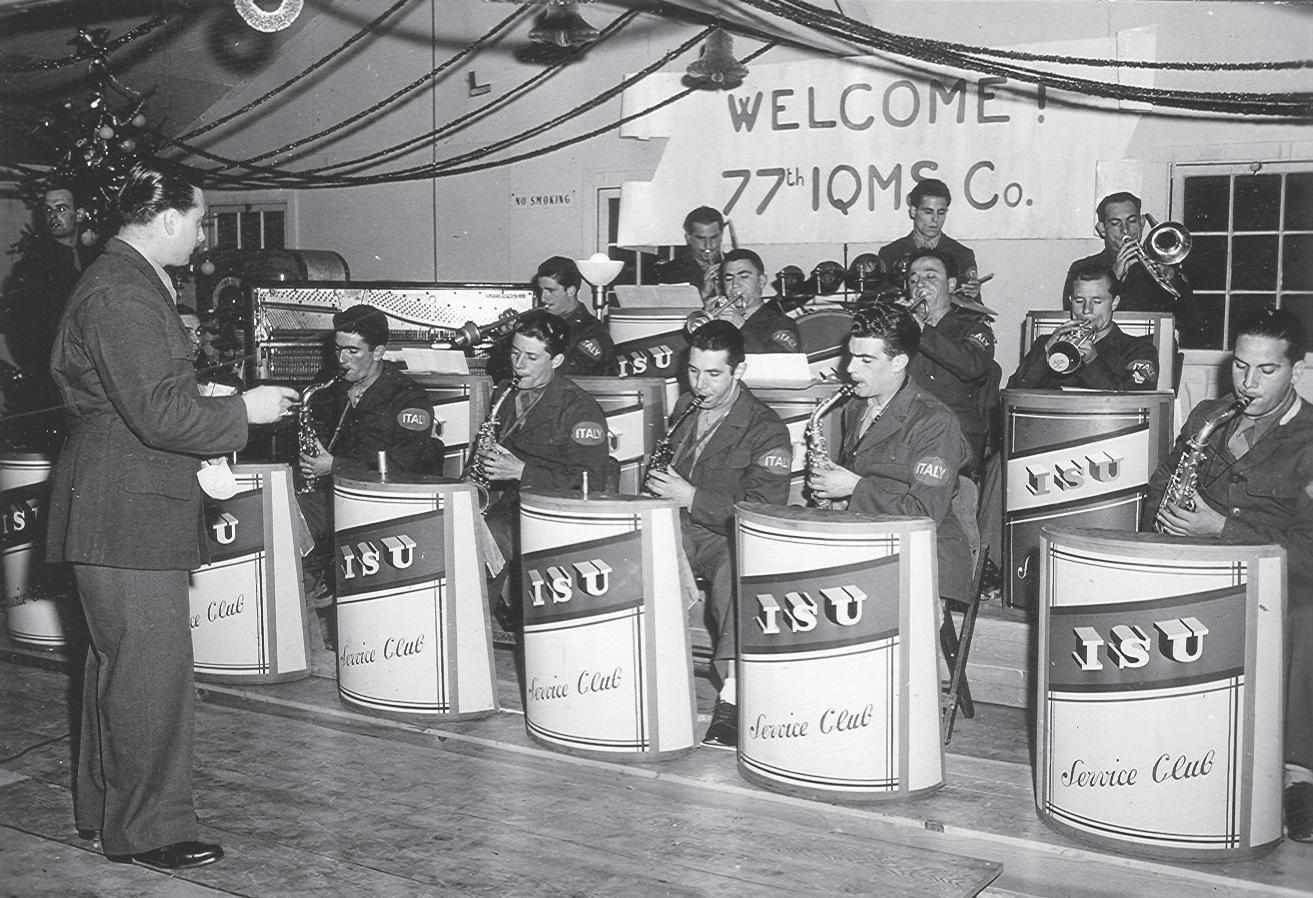
3 minute read
A LOOK BACK
World War II-Ogden Camp
BY SARAH LANGSDON
Advertisement
World War II created an unique problem for the United States. The country had to deal with quartering, maintenance, and utilization of enemy prisoners of war as well as the lack of labor homeside to deal with the expanding military installations and agricultural needs. Ogden was in a position of needing cheap labor and having a military installation that could house prisoners of war. In 1943, the first prisoners of war arrived at Camp Ogden, built on the north end of the Defense Depot Ogden. The camp was constructed from In 1943, the first November, 1942 to January 22, 1943, and consisted of a cold storage plant, warehouses, station hospital, prisoners of war arrived at Camp compound number one, and an Ogden, including athletic field. Later, in 1943, camp first Italians, and headquarters, theaters, recreational later, Germans. It hall, fire station, compound number was the only camp two, and military and civilian housing were also built. The first group of 1,030 Italian prisoners arrived from in the US to house both nationalities During the harvest season, the garden yielded over New York on April 9, 1943, with more successfully. $10,000 worth of produce. added throughout the year, until there were 4,657 prisoners interned. Once Italy surrendered in September 1943, the Italian prisoners were organized into Italian Service Units. They The prisoners arrived and were given exams, processed, and were still considered prisoners of war but had increased then given supplies, such as clothing. The uniform was dyed freedoms. They were allowed visitors in camp and could dark blue and had P.W. painted on the back, arm sleeves, and attend church, picnics, museums, and other places of pant legs. This was to make sure they were not mistaken for interest when accompanied by American officers. This led the American uniform. The prisoners were divided into 16 to an increase of fraternization between the Italian men companies of 250 men each. and American women who both worked at the depot and The prisoners were allowed recreation and religious services. attended events such as dances at St. Joseph’s church. The recreational halls were used, and 1,300 could attend With the positive experience housing Italian prisoners, Camp service at one time. The Italian prisoners maintained both a Ogden also became home to German prisoners as well. It was band and an orchestra. The band had twenty-eight musicians the only camp in the United States that utilized both at the and gave concerts once a week with instruments donated by same time. There was a need for additional manpower as the the Catholic Church. They also used the athletic fields to host Italian Service Units were moved to other occupations at the weekly soccer matches between companies. depot. The first Germans arrived in 1944, with a total of 2950 With the county wide shortage of laborers, the prisoners coming over the next year. The prisoners continued to work were employed to work in warehouses at the depot, canning as well as receive training in the English language and onfactories, and farms. Many of the men were employed and the-job training such as fork-lift operations. provided basic needs for the incoming prisoners, such as The camp remained open until 1946, when all the prisoners dyeing uniforms, fixing shoes, and tailoring clothes. The were shipped out to the east coast for their return home. workers repaired over 4,000 pairs of trousers, 700 jackets, 550 Over the years, many Italians returned to Ogden and made a shirts, and 200 mattresses in just under a year. There was a life in Utah. There were also some Germans who came back camp garden that provided produce, not only for the prisoners, and had had fond memories of being treated well and the but which was also sent to Bushnell Hospital and Hill Field. beauty of the area.

The Italian prisoners had both a band and orchestra and gave concerts once a week with instruments donated by the Catholic Church.



